By Dan Weisz
This post focuses on the beauty of a Red-tailed Hawk taking flight. I came across this hawk as it was resting on the top of a telephone pole. While I would prefer natural perches, in farmland and desert flats most of the native trees have been eliminated. The tallest perches around are the telephone and power poles. As I watched, the Red-tail let me know it was ready to take to the air. It went horizontal, ‘crouched’ down, and, with its wings up, was ready to go.
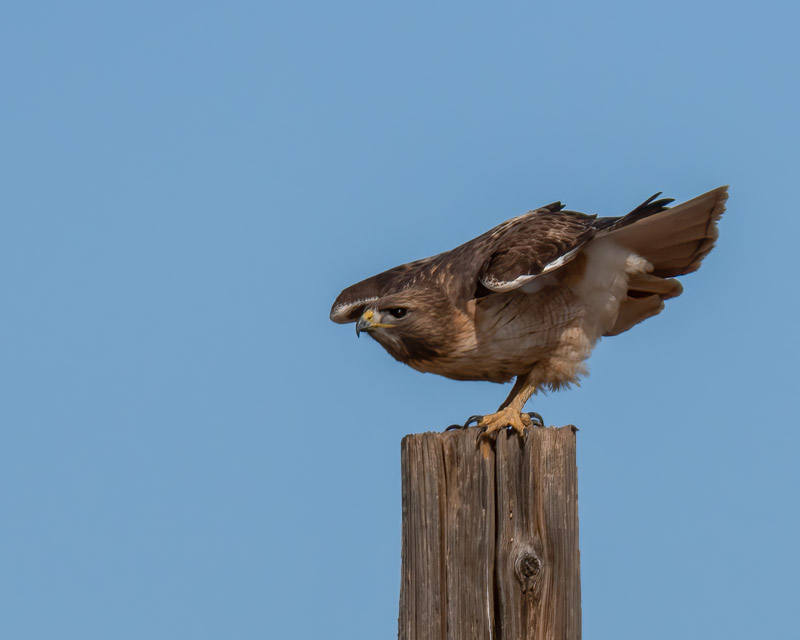
The Red-tailed Hawk pushed up with its legs while raising its wings up to allow for a strong downward wing-push to get the hawk airborne.
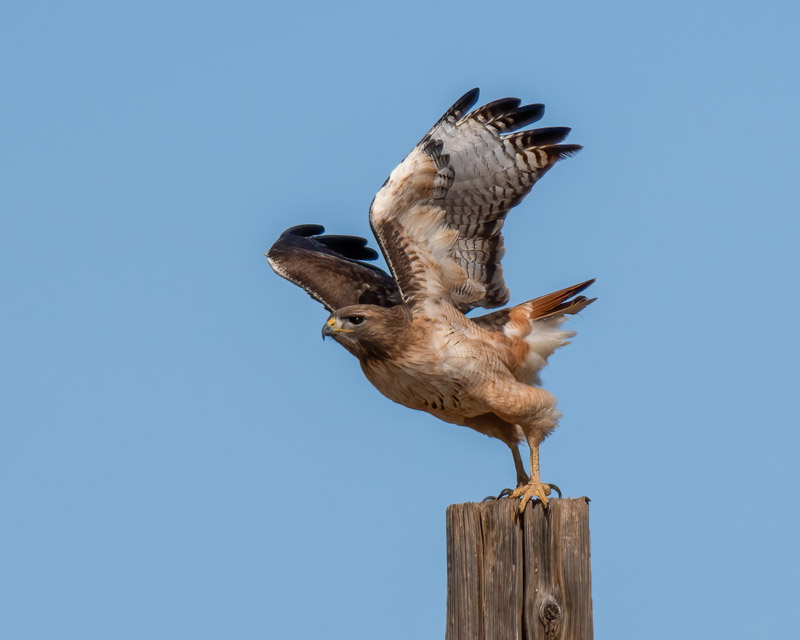
And just like that, the Red-tailed Hawk was in the air, wings and tail spread wide to catch air. The hawk’s legs dangle straight down from the strong push they made.
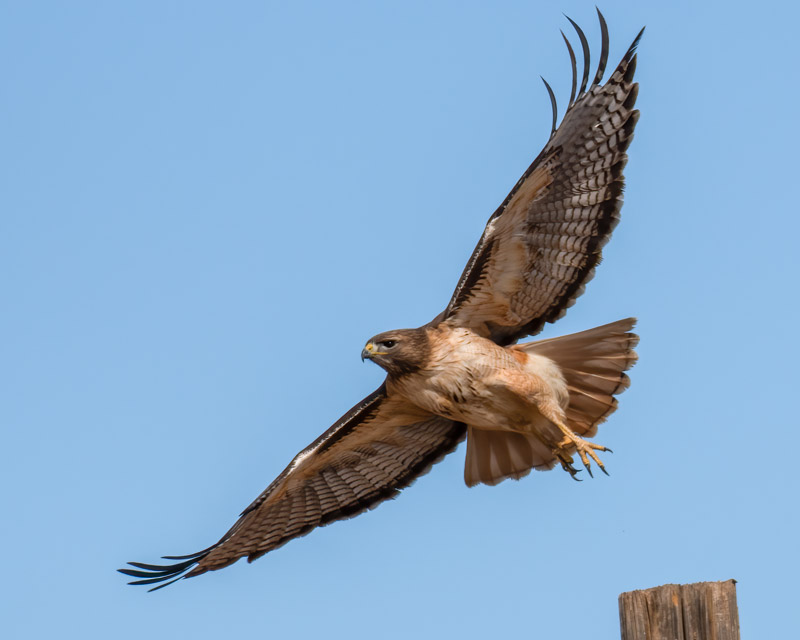
The Red-tail pulls its wings up after the first downward stroke. It will raise its wings and then drive them downwards once more to push its way up and out. Notice that the hawk has begun to bring its legs up towards its body.
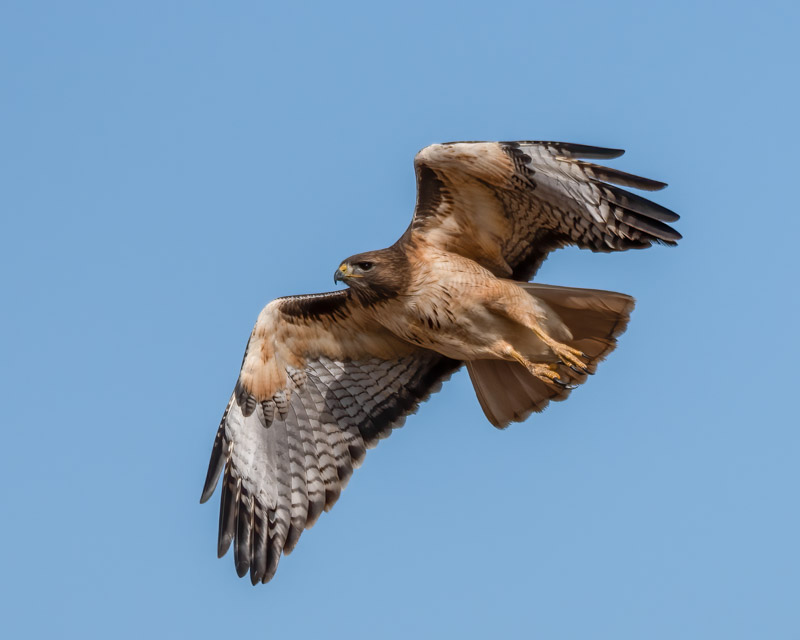
Its wings are up and ready for one more powerful downward push. In these photos, you can see the ‘reddish’ color of the raptor’s tail. You can also see that the hawk has a dark eye. The tail color and the eye color lets us know this is an older bird.
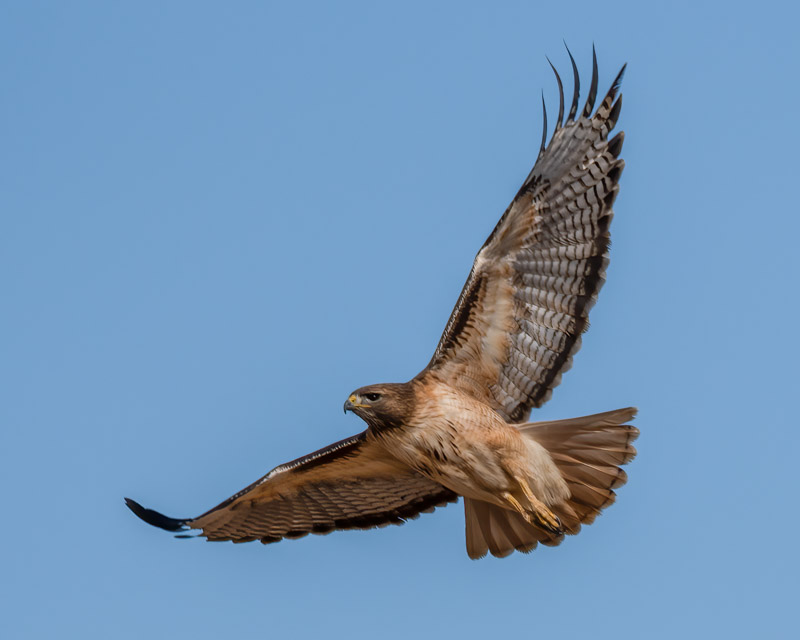
And then up again and the hawk looks like it is finally moving forward. It is focused on where it is going and the legs are tucked up and out of the way. You can see one of the tell-tale signs of a Red-tailed Hawk. The leading edge of its wing, from its ’shoulder to its elbow’ is very dark. That area of the wing is called the patagial mark. For more on patagial marks and Red-tailed Hawks, see this nice article that Ned Harris wrote for the Sabino Canyon Volunteer Naturalists: https://sabinonaturalists.org/critters/red-tailed-hawk/
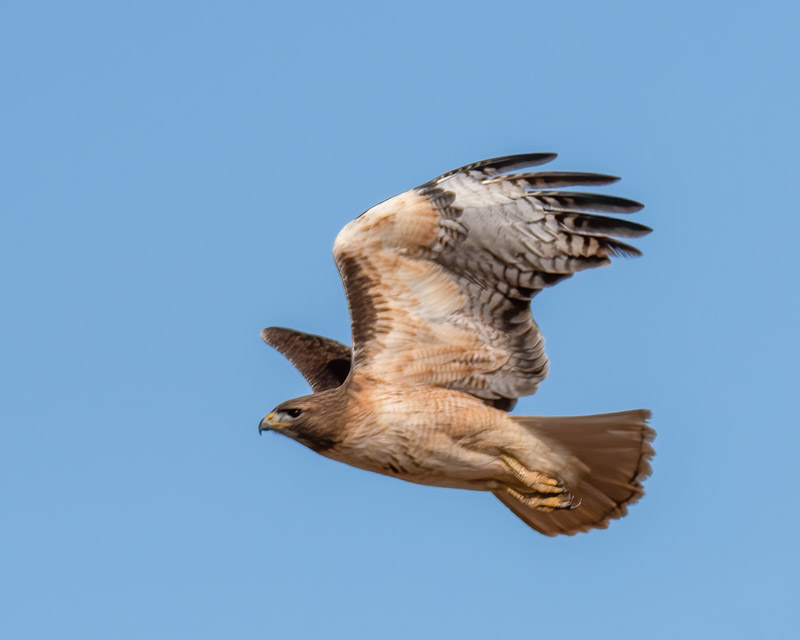
The next photo shows the grace of this raptor in flight. These birds are designed for wonderfully efficient flight. We humans romanticize the flight of raptors and often wish we could fly as readily as they can. We forget that flying takes lots of energy on the part of these birds. Raptors will use thermal activity, or uplifts from air blowing against hillsides, or any deflection of air for lift. It is less tiring to ’surf’ the air than it is to just power through the air. Flying takes effort.
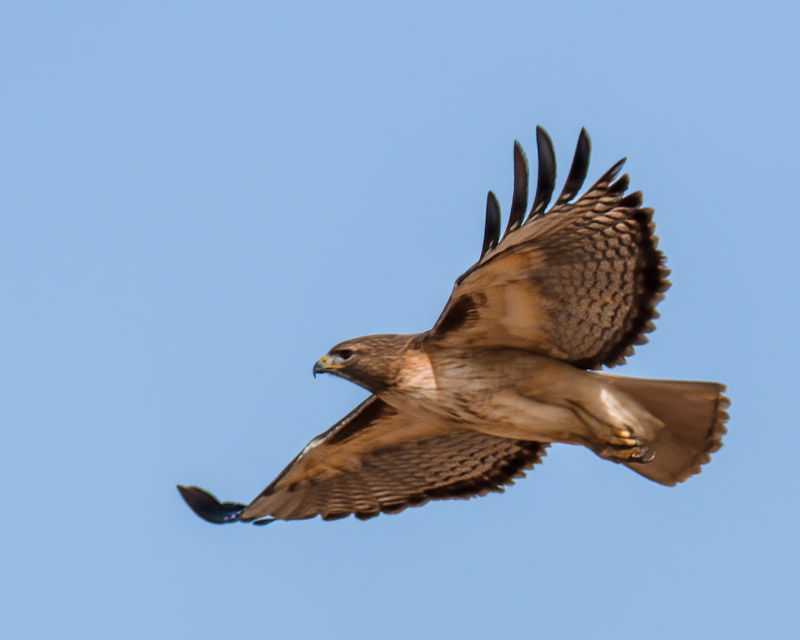
One study reported that adult Red-tailed Hawks spend about 96% of the time during the day perched. Of their airtime, most of it was spent soaring with just a small amount spent flapping. Flight may be to get somewhere, to establish or advertise territory, for hunting or for courtship.
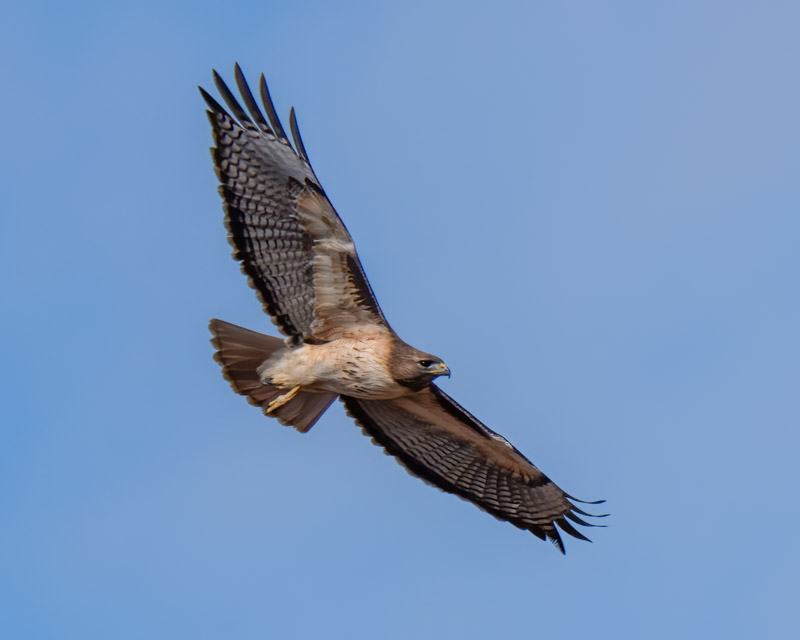
After gaining height and finding good air, the Red-tailed Hawk continued to move on away from where I was watching. It is interesting to note that at this point (in both the photo above and below) it has its right foot tucked away while its left foot is still hanging down. Who knows why but this is likely just something random at the moment.
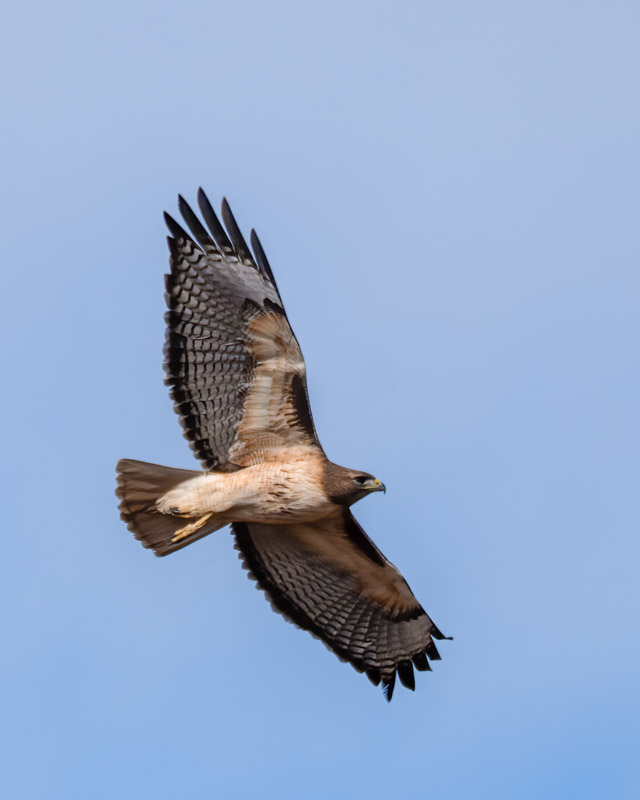
Red-tailed Hawks are handsome birds and just a wonder to see in the air. Birdnote shares a bit more information on these common and widespread birds: https://www.birdnote.org/listen/shows/red-tailed-hawk-bulky-bird
Return to Foothills Clusters Homehttp://www.foothillsclusters.com
